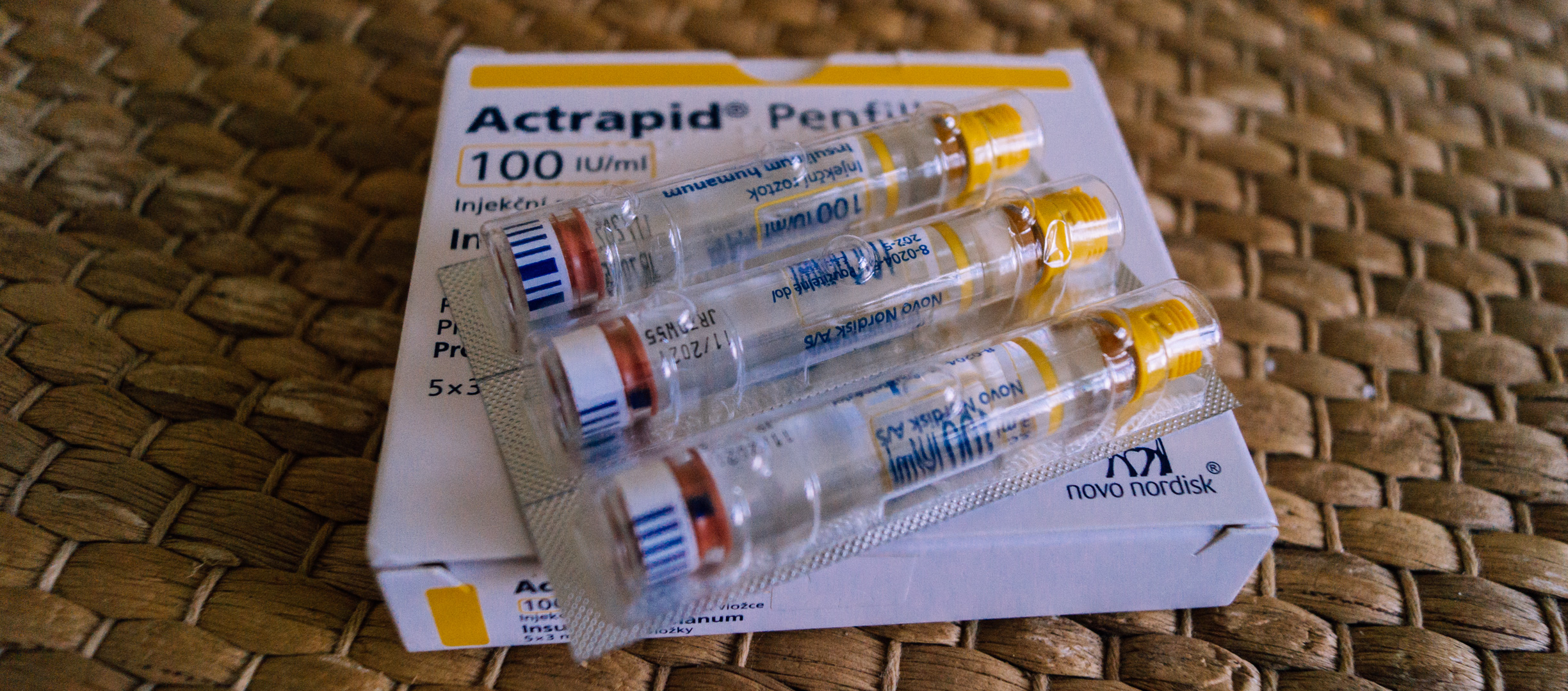Dosing insulin for protein

A note of caution: Always talk to your doctor before making changes to your insulin regiment.
In the absence of carbohydrates in the meal, the liver turns to gluconeogenesis – the process of converting protein to glucose. I eat up to 30g of carbohydrates with every meal, and I always have to dose insulin for the protein.
For this I use regular insulin, as recommended by Dr. Bernstein’s book. It has a different action profile to fast-acting insulins like NovoRapid, which better follows the slow release of glucose from protein. I inject 50% of what I do for carbohydrates, so one unit for 15 grams of protein.
To avoid going hypoglycemic I use a split bolus and dose for the carbohydrates and protein separately. I take my protein dose after I finish eating and I sometimes wait up to an hour before injecting. This depends on the composition of the meal.
Fattier types of meat like pork belly will take a longer time to start releasing glucose, as the fat slows down digestion. This also affects the protein content: fatty meat products such as sausages and salami typically have a protein count of 15g per 100g, whereas leaner meats like chicken breast have up to 25g. I find it easier to dose insulin for lean meats than things like streaky bacon.
For the total protein in a meal, I try to stick to 25-30g of protein. The recommended daily intake is 0.8 – 1.2g of protein per kilogram of body weight, so eating a lot more seems wasteful. It also makes insulin dosing unpredictable. Cutting carbohydrates is not a magic bullet, and if you eat a lot of protein you’ll have the same problem as if you eat a lot of carbohydrates, but the rise in blood sugar comes hours after eating instead. It means you can wake up to an unpleasant surprise, with greetings from last night’s dinner.
When I protein binge and eat more than 30g of protein I split the insulin dose again, taking half the insulin dose when I finish eating and the other half one to two hours later. Sometimes I think of myself as a wandering insulin pump.